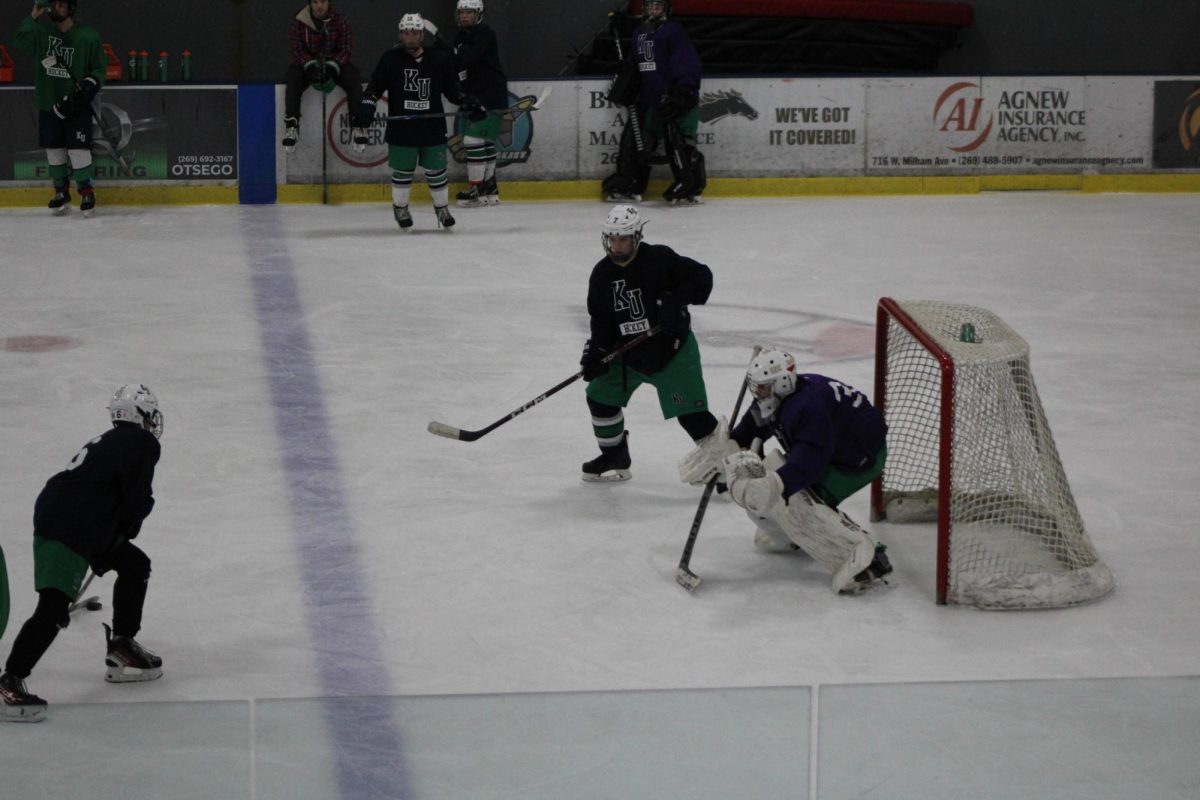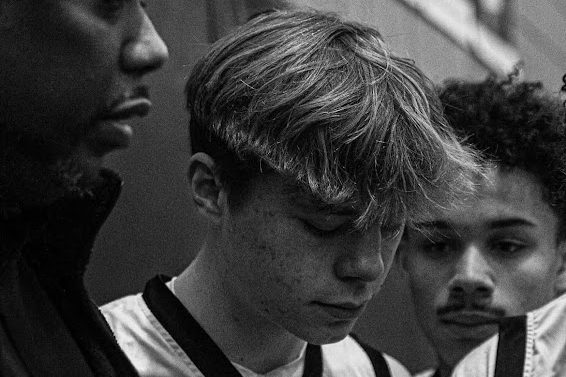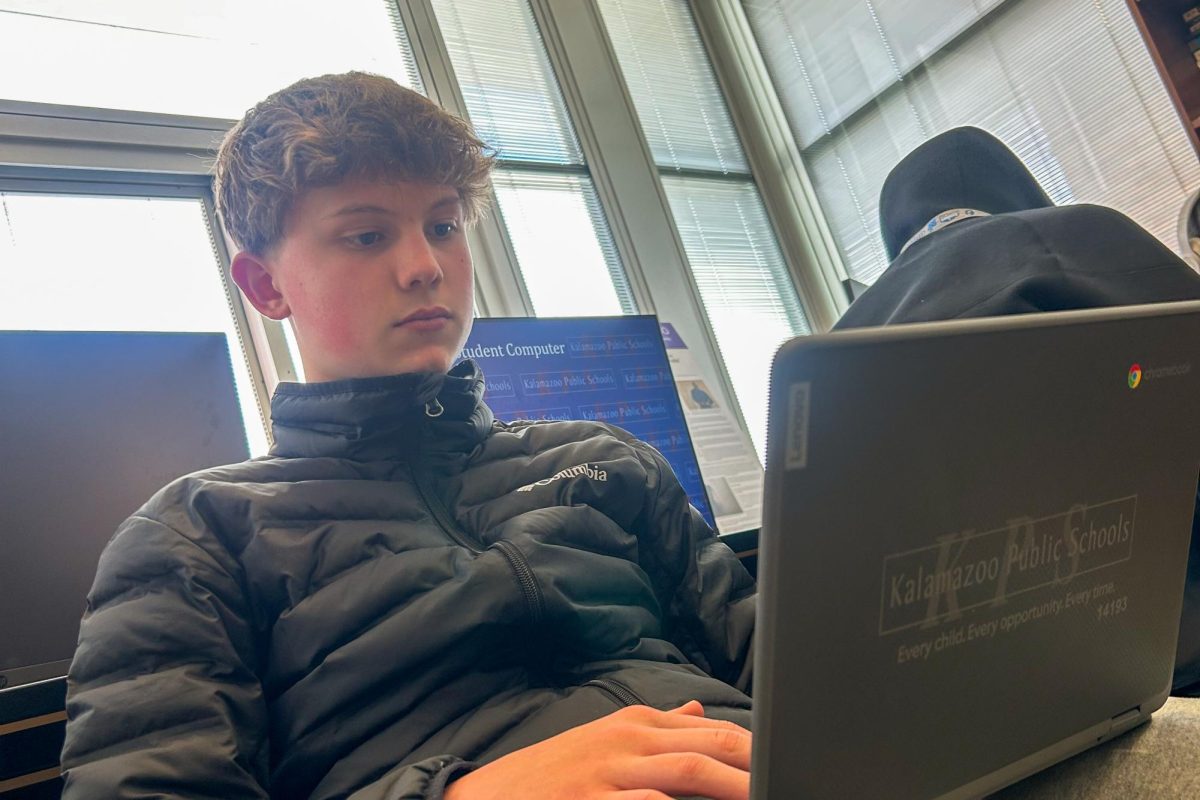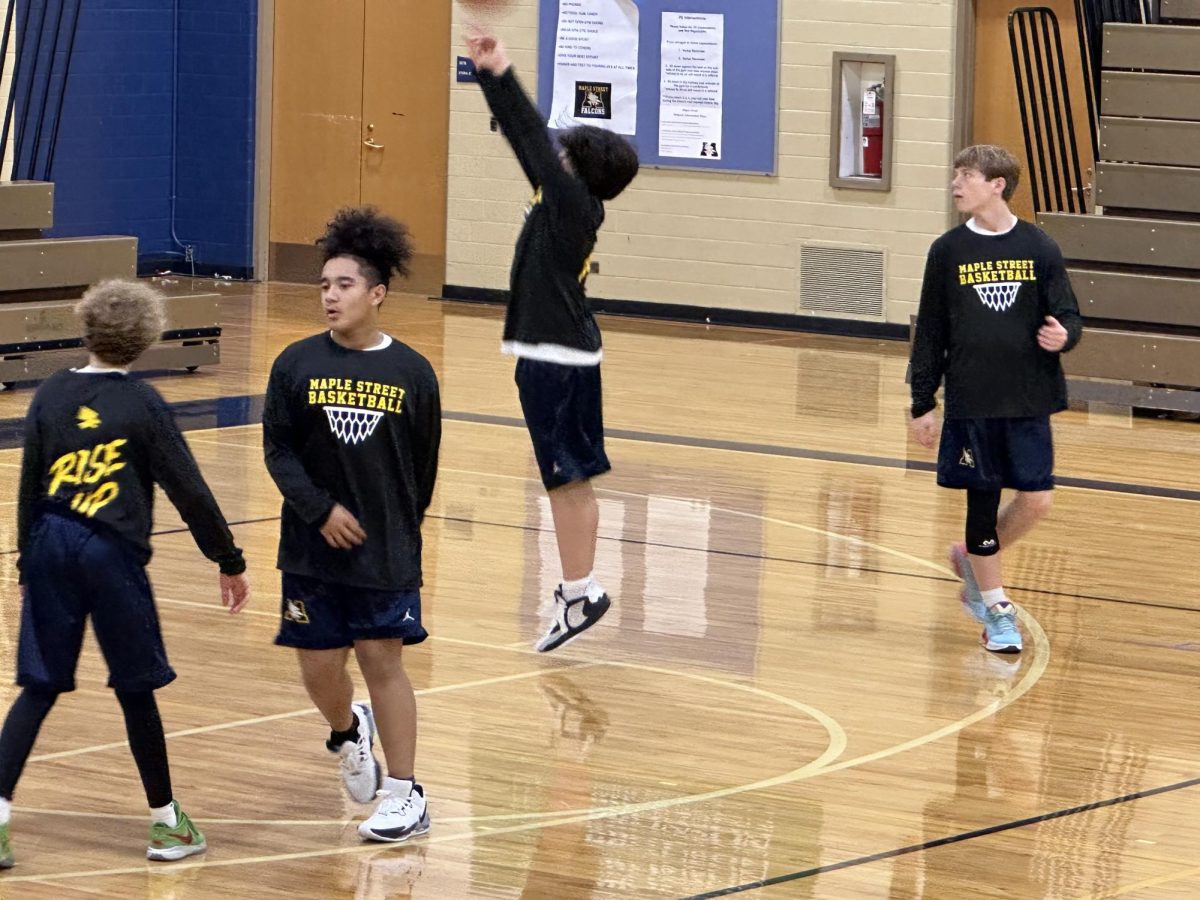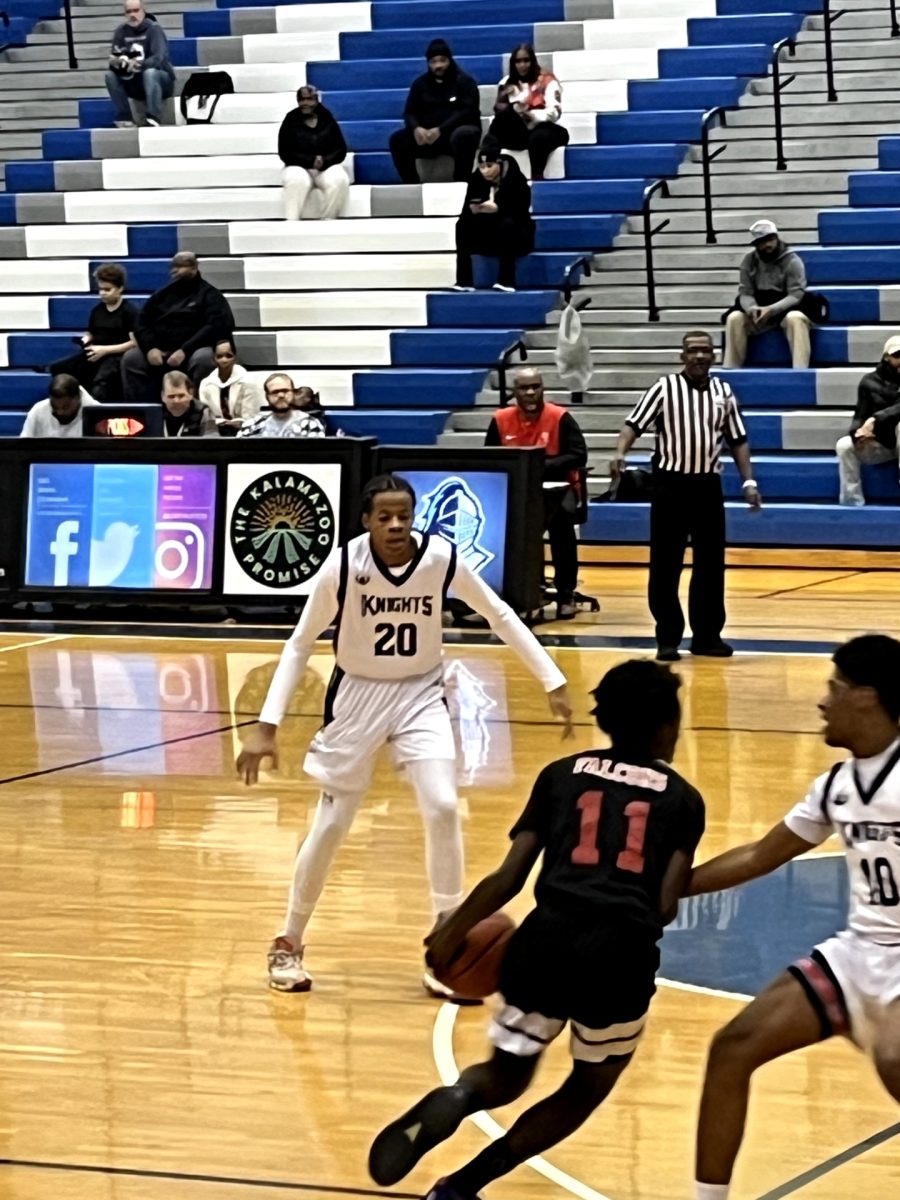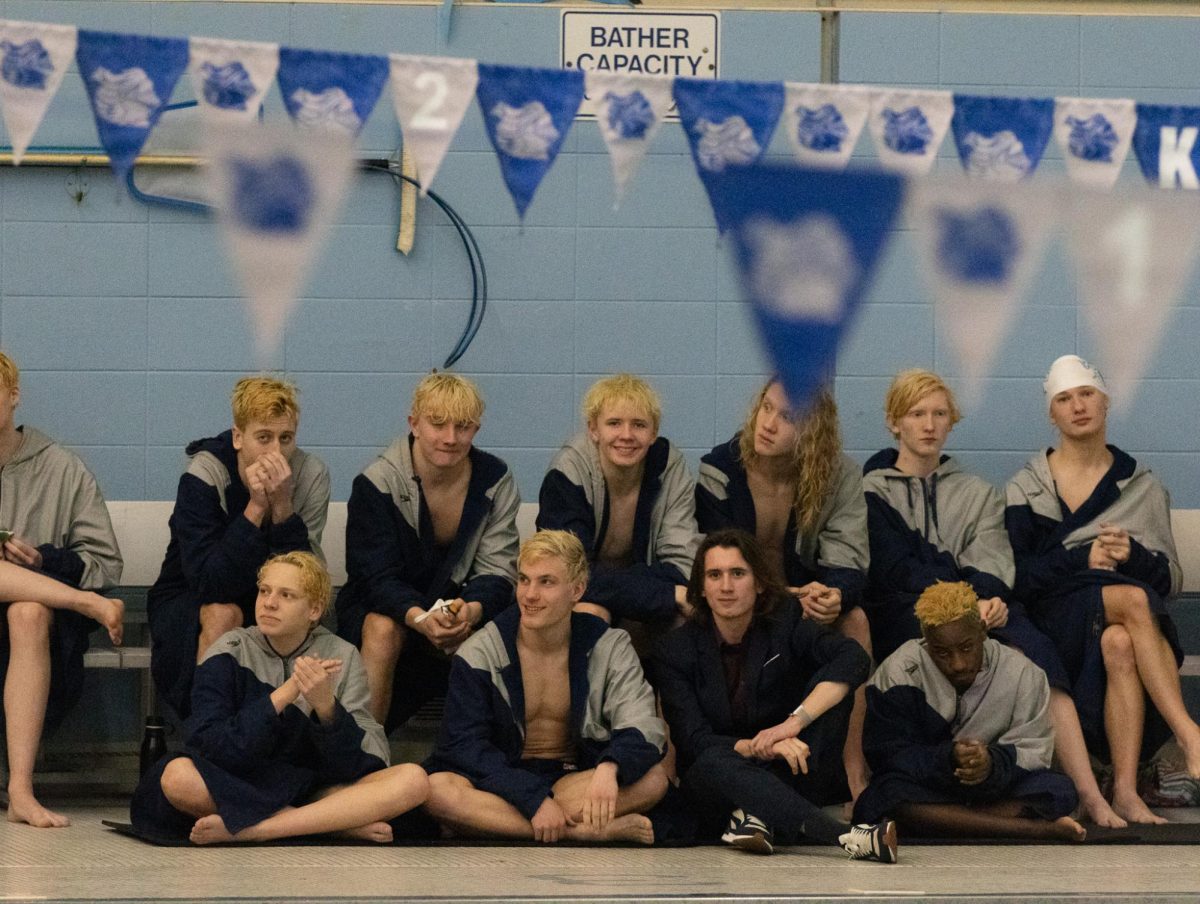You’re in the Wings West Arena, and there’s a slight chill in the air. You’re sitting on a bench watching the players skate around the ice right before the game. The music suddenly lowers, and all the players fall into line. The announcer reveals the starting line-up, commencing in the puck drop.
Kalamazoo United is a hockey team consisting of students from Kalamazoo Central, Hackett, Schoolcraft, Three Rivers, and Loy Norrix.
So far this year, they have played 20 games, attaining a winning record of eleven wins to nine losses. This year, Kalamazoo United has the chance to ‘break their curse.’ Over the last three years, the team has performed below expectations. This year, they have the chance to finally have a winning record.
“We practice twice a week,” said LN captain and senior defenseman, Cameron Shaffer. “The first practice is a lot of competing and trying to work on endurance, and the second practice is a little more focused on structure and power plays.”
A “Power Play” is when one player on a team is serving a penalty. During this time, the other team has a numerical advantage by having five skaters on the ice, while the penalized team only has four. Depending on the severity of the penalty, a power play can last two, four, five, or 10 minutes.
During practice, the team often divides up into two groups to scrimmage or simulate certain plays the whole team is working on. Playing against their teammates simulates playing against another team and more effectively prepares players for games, rather than just playing by themselves or in a small group.
Any slip-ups that may happen during practices can be tweaked and perfected for the big game. And for Shaffer, learning to skate at a young age proved difficult.
“I started skating when I was four, and I was the kid crying about his skates hurting, so I actually wasn’t that good at it to start,” Shaffer said.
Hockey is oftentimes a very physical sport. At the high school level, hitting and checking other players is allowed with restrictions, which can lead to rough battles for possession. Despite how physical it may seem, injuries can be prevented if the proper precautions are taken.
“I have been pretty lucky with injuries. I’ve never broken a bone, but I have sprained my wrist once or twice,” said Shaffer. “Most recently, I had a knee injury that I had to go to physical therapy for since I lost all strength in my quad muscle, but that’s the worst injury I’ve had.”
As a whole, the objective of a sport is to score more points than the opposing team. Despite this, individual players all have different things running through their minds. A goaltender may be thinking about blocking shots from the other team, while a defenseman may be thinking about how to prevent the puck from entering the defensive zone. Mindsets differ from player to player, position to position, and game to game.
“Some games, I’m thinking about what I got to do, and other games, if there’s a big score difference, it’s just random stuff,” said Shaffer.
Mentally, hockey can be as challenging as it is physically. Losses can damper a player’s confidence, and minor errors often majorly disrupt a skater’s play on the ice.
“Obviously, making mistakes and losses aren’t fun, but they’re a part of the game, and the best thing to do is just take what you can and learn from them to keep improving,” said Shaffer.
Players prioritize keeping a neutral mindset, avoiding overconfidence in case of a loss.
“Every sport helps build a part of you and build your mindset,” Shaffer continued, “and I think that you can bring one into the other..”


